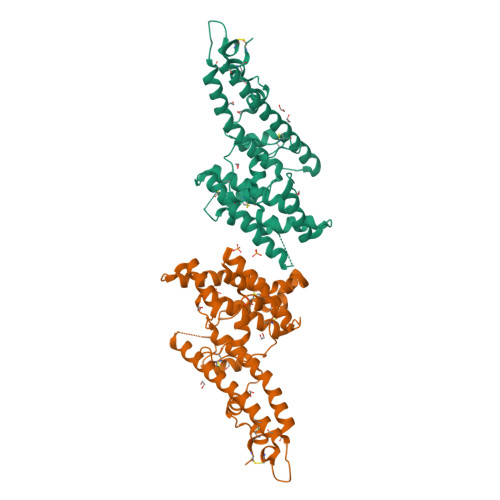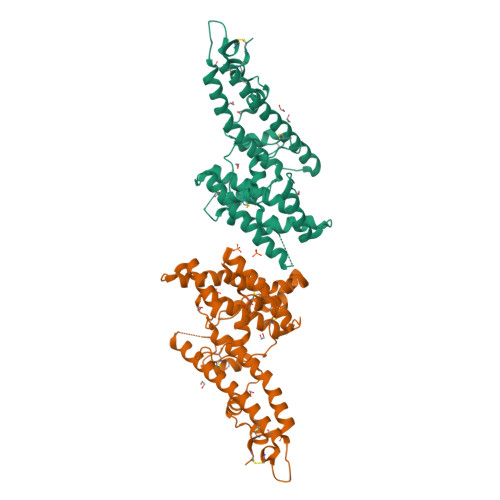Dimerization of Plasmodium vivax DBP is induced upon receptor binding and drives recognition of DARC.
Batchelor, J.D., Zahm, J.A., Tolia, N.H.(2011) Nat Struct Mol Biol 18: 908-914
- PubMed: 21743458
- DOI: https://doi.org/10.1038/nsmb.2088
- Primary Citation of Related Structures:
3RRC - PubMed Abstract:
Plasmodium vivax and Plasmodium knowlesi invasion depends on the parasite Duffy-binding protein DBL domain (RII-PvDBP or RII-PkDBP) engaging the Duffy antigen receptor for chemokines (DARC) on red blood cells. Inhibition of this key interaction provides an excellent opportunity for parasite control. There are competing models for whether Plasmodium ligands engage receptors as monomers or dimers, a question whose resolution has profound implications for parasite biology and control. We report crystallographic, solution and functional studies of RII-PvDBP showing that dimerization is required for and driven by receptor engagement. This work provides a unifying framework for prior studies and accounts for the action of naturally acquired blocking antibodies and the mechanism of immune evasion. We show that dimerization is conserved in DBL-domain receptor engagement and propose that receptor-mediated ligand dimerization drives receptor affinity and specificity. Because dimerization is prevalent in signaling, our studies raise the possibility that induced dimerization may activate pathways for invasion.
Organizational Affiliation:
Department of Molecular Microbiology, Washington University School of Medicine, Saint Louis, Missouri, USA.




















